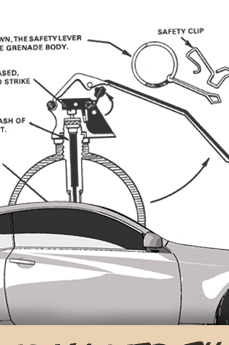| |
|
It's great that you are interested in turbo or supercharging your 3.8L Lambda II Hyundai V6 motor. That makes you one of many. However, now that you're interested, here's the catch(es). Both your motor and it's ECU are in no way setup to easily accommodate any kind of forced induction - at all - this motor was designed to be reliable and safe to operate for 100,000 miles in it's stock configuration. It comes from a family of naturally aspirated econo-box SUV motors that Hyundai has made their bread and butter with for many years, and it has little to no sports pedigree at all. While this motor may make more power off the dealership lot, the 2.0T car's motor comes from a family of motors which are shared with rally cars and is designed from the outset to be turbocharged.
This car's ECU has pressure-related safeties! It WILL shut you down or put you in limp mode if it detects positive pressure and the ECU safeties haven't been bypassed in some way. This is a MAF-fueled motor. A bypass valve (recirculates blown-off air back into charge pipes) rather than a blow-off (dumps to atmosphere, sounds cool) is strongly recommended.
Be forewarned; abandon all hope, ye who enter here. This is going to be an uphill battle, expect life to be hard, painful, very expensive, and don't expect big power once you've finished either.
First, some Frequently Asked Questions:
Q: Rhys Millen's Pike's Peak and drift car was turbocharged, if they did it, it can't be that hard, what's the problem?
A: This is going to be a long answer, get some coffee and settle in. Rhys Millen Racing (RMR) first demonstrated a Hyundai-branded drift car in 2009 prior to the car's commercial release. RMR's first drift Genesis which was on display in videos etc. was actually a pre-production BKI chassis which had a Nissan VQ35DE (or variant thereof) motor installed in it. This was to get the car out on display ASAP and make cool videos of Rhys sliding around in a Genesis.
The later car you've no doubt seen constantly in Hyundai ad material, drifting in competition, climbing Pikes Peak, so on and so forth - was a completely hand-built BKI V6 car. When I say completely hand-built I mean the only thing it has in common with your BKI MPFI 3.8L is likely the engine block itself and some body panels. The entire suspension was hand-built with custom adjustable components, the motor was built by RMR's crew of highly specialized and skilled race builders, and a Turbonetics snail was slapped on the motor to give it extra boost. The car was completely hand-hacked and purpose built; the OEM drive-by-wire unit was removed and a throttle which is actuated by a mechanical line, for example, was installed. Standalone engine management was installed, likely an AEM EMS, for example; this is massive dollar-amount stuff and the reason a race team was able to "quickly" and "easily" build a V6 Genesis for race application was literally by ripping out the OEM computers, controls etc. and throwing them in the trash. Everything, from the cams to the internals to the turbo system - were designed "as-built" for that car. If you are unaware, the term "as-built" means every single part was machined, designed and spec'd to function on that specific car and motor.
This means that if parts that were designed on that car were mass-produced (the cams are a good example) and people attempted to install them in their own production cars, things wouldn't work and shit would break. This is because Hyundai introduces revisions to systems/sub-systems through the entire car as it's production runs, so as to ensure quality, reliability and warranty liability integrity. Ergo, just because RMR did it, doesn't mean it is practical, easy, or affordable for you to do. People build race cars like RMR's Genesis when a marketing department somewhere is writing big enough checks, and a manufacturer's management team has given directives to the race team such as "Promote the flagship motor [the 3.8]" and "Our clients will get boners if they see their car being raced/drifted professionally".
Hyundai Motor America's marketing people want you to feel like the car you are purchasing is a sports car that was meant to be abused and driven for fun - its the sole intent of their television commercial campaign if you'll recall - but they don't want to have to actually deliver that car to the customer. Hyundai is a massive, conservative corporation, and the end product will always be a tough, reliable, simple-as-possible, warranty-safe machine that offers a certain fun factor without going over the warranty liability ledge to the point that their underwriters no longer feel comfortable warrantying their cars.
Q: Nissan's VQ35/37 etc motor family [350Z/370Z] are supercharged and turbocharged fairly easily, I see lots of them making 400+ whp "easily", I don't see why we can't do the same?
A: Stop for a second and think about that question. Nissan has been designing, building, racing, and mass-producing forced induction and naturally aspirated motors for decades. They have set the bar for turbocharged small-displacement motor design and arguably have also set bars for naturally aspirated motors - for decades. Lessons they have learned with motors like the RB26, SR20, and so forth are incorporated into every motor they design today. That means modern-day motors in their sporty coupe competitor for your car has got decades of engineering pedigree that your Hyundai motor won't have for a very long time. Granted, Nissan kind of screwed the pooch with a little oil-starvation issue on their VQ37 but hey nobody's perfect.
Your Lambda II motor descends from SUV motors Hyundai used initially to power things like early models of the Santa Fe, Veracruz, Kia Amanti, the Sonata and even the lowly Tiburon. This means that this engine has zero accommodations in it for forced induction.
Turbo/Supercharger Kits currently on the Market
Currently there is only one provider on the market with a turbocharger kit that's even remotely usable kit - TurboKits.com worked in conjunction with BTRCC to put together a turbocharger kit which, while it has worked at least once, isn't ideal, nor is it affordable, at almost seven thousand dollars plus your labor time and miscellaneous accoutrements every turbo-upgrade job will require. For what its worth, the kit itself as far as hardware is concerned - is not bad, and fairly well appointed.
FYI: TurboKits advertises "... thrill of driving a 500 HP street car..." but if you look at the dyno of the kit, it put out 402whp @ 7.5psi. Take that for what you will. Remember that your OEM V6 longblock (that means an entire motor as it comes from the factory) should not be expected to sustain more than 400whp for very long in any configuration; the only remedy for this is to build & balance the motor.
Also: Nothing in their kit detail mentions crankcase ventilation equipment. This is a BIG PROBLEM. This engine was never designed to handle crankcase pressurization that forced induction introduces to an engine's vacuum system & oil supply etc. Therefore, common band-aid solutions are things like physically restraining the engine's oil dipstick to prevent it from flying out under pressure, and chickenshit fixes like that. This is bad. Rather than taping things down that are under excess pressure, properly ventilating the crankcase will alleviate excess pressure on the entire system; this means drilling & tapping to add ventilation lines into the vacuum system. Bear this in mind as - with any "kit" - there's more to actually making it work than just slapping on the parts you get in the mail.
One thing to note here regarding tuning is that BTRCC - while they have limited ability to real-time (dyno) tune a 3.8's Delphi ECU, this type of engine management setup is nothing more than a jury-rigged patch. Yes they supply an upgraded MAF adapter and yes it will work; however it is by no means a precise or well-tuned solution. It is up to you to decide if the price tag and sweat & heartache involved in actually making this work is worth it.
Supercharger Kits
There was a number of Korean suppliers offering supposed centrifugal supercharger kits using a generic APG unit. Centrifugal superchargers are the solution of last resort for an S/C application in which there is just no room to practically or feasibly mount a screw-type blower (e.g. Roots/Eaton etc) onto the intake manifold runners. Korean importers such as PowerAXEL, ARK etc. all advertised this APG kit and called it their own. PowerAXEL even blew a car up attempting to demonstrate it, but they sort of nailed a brick wall with the whole "we can't actually tune this car" problem.
ARK rolled around in their deep burgundy/red Hyundai Motor America-sponsored SEMA show car for quite a while with an APG supercharger literally hanging on the car's motor, but not belted up because again - it couldn't be feasibly tuned. As of this writing that supercharger is still either hanging uselessly on their car's motor making zero power and looking stupid, or it's been removed and Ted (the owner/operator of ARK) has given up trying to convince the Genesis clientele he's a badass. At least with that car. Certainly he enjoys making shit up and charging customers ridiculous prices for products he's copied/stolen from other manufacturers, and then shipped to you with Bible Verses of all things printed down the sides of his packaging.
Next Generation Motorsports - of Miami Ford Mustang and Tiburon fame in the past - had at least built a mocked up screw-type supercharger kit they were preparing to offer for the car, and it rotted for years as Vaporware. Ultimately It disappeared and appears that it will never be offered. This is actually a good thing because just like the turbo kits mentioned above, its prohibitively expensive and on top of it all - the NGM kit would have left you with a monster blower sticking out of your hood with a big square hole cut in it - all while making incredibly low horsepower while looking like your little Asian Import was posing as a Detroit Dragster. The one upside to the NGM kit was that if you did build your motor thoroughly, and if there WAS an easy way to flash tune the ECU, you could have theoretically seen some real horsepower monsters at some point. Key word is could have.
DIY Homebuilt Turbocharging your 3.8!
Can it be done? Sure. Will it be easy in any way? Nope. Will it make alot of power and be super impressive? Probably not. The highest power and most reliable homebuilt turbocharged V6 thusfar is a 380whp remote-mount car; is this something you would take to a road race event on a track and amaze the world with? Certainly not. Does it look and sound cool and work well for shows? Absolutely.
Here is a checklist of things you go over before you get into doing this, and I will not provide a how-to DIY guide on turbocharging your V6 because lets face it, it's incredibly expensive and difficult just to get 400whp out of this thing with a turbo on it, and the facts of life are that a 2.0T car can do the same and more for lower cost, with less heartache and pain involved. That being said, if you DO manage to get your V6 reliably and operably pressurized with a turbine attached to it, that in and of itself is something of an accomplishment.
- Tuning, Choose ONE:
A.) Take car to BTRCC, buy a 2.0T OEM MAP sensor, pay Koreans to band-aid tune the car, hope for the best! SFR built a wacky turbocharged V6 and wants you to see how cool they are, but when asked if they would tune a client's turbocharged V6, they said NO.
B.) Buy an AEM FI/C piggyback, hand-hack into your wiring harness. Take to professional tuner. Hope to God you can figure out how to get past the ECU when it runs home to momma and discovers positive atmospheric pressure in it's precious engine.
C.) Buy an AEM EMS/GReddy Emanage/Haltech Platinum or any standalone. Take to race shop. Write big check. Hope to God you can keep your BCM functions.
- Crankcase Ventilation:
A.) Strap down your oil dipstick so it doesnt fly out under pressure and hope for the best!
B.) Hire someone competent to properly ventilate your crankcase with hard modifications
- Remote mount or in-bay mounting of turbocharger:
A.) Stick it in the back near the exhaust and run small-diameter piping to allow for good spool up time. Don't run into any deep puddles. Ever.
B.) Find some very cramped spot in the engine bay and stuff the turbo there. Heatshield the everliving shit out of it and vent your hood. Pray.
- Engine building to sustain high power:
A.) Pay an engine builder alot of money to balance & install forged rods, pistons, machined crankshaft etc. to survive further punishment.
B.) Pay even more money to do the above in addition to sleeving your engine block to close the upper decks and strengthen the block against high boost warpage of the cylinder walls.
C.) Don't build your motor and upload a YouTube video for the world to see when you shoot rods and pistons out the bottom of your block into the pavement.
- Tap an oil return line somewhere safe:
A.) Drill and tap into the oil pan so your turbochargers oil gets throw back into the correct spot. Remember, if you do not ventilate your crankcase, your oilpan will be seeing alot of oil pressure and your oil draining from the turbo will need to be forcibly pumped into the pan at a higher pressure.
B.) Run your oil return line somewhere lazy and wait for it to bust off at speed and spray your windshield and engine bay with hot oil and potentially start a fire.
|
|
|
 |

































